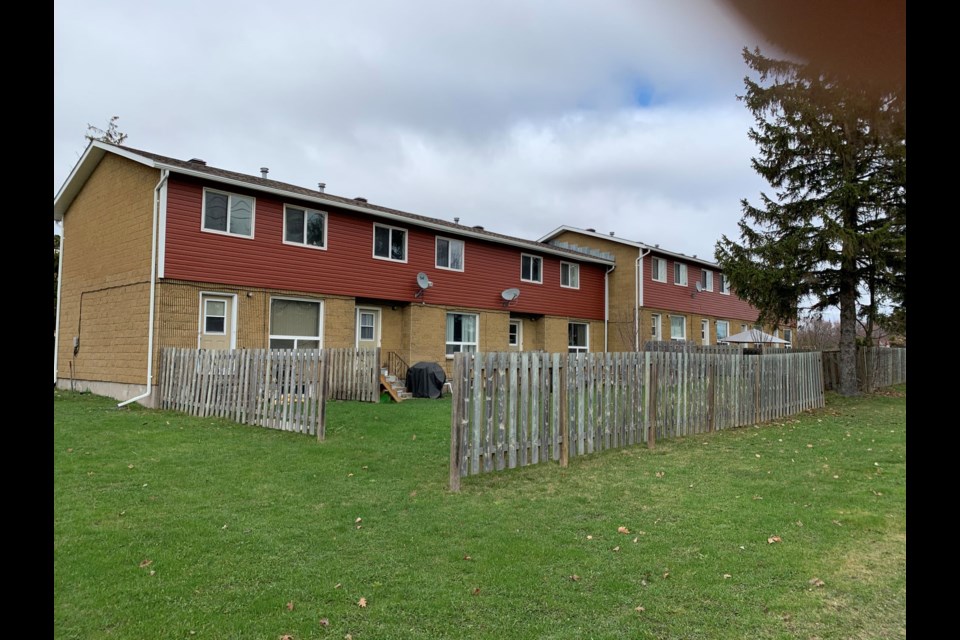From the archives of the Sault Ste. Marie Public Library:
A 1966 article run in the Sault Star discussed how much hostility young women faced when they found themselves unmarried and pregnant. In those days, they had the option of staying at one of almost 40 homes for unwed mothers in the country — often to try to shield their parents from scandal. In some homes, the women would have doctors’ visits and a hospital birth while using the title of Mrs., an assumed name, and a fake wedding ring.
However, Sault Ste. Marie had no such facility, and any unwed mothers would have had to go to Toronto or Thunder Bay for a residential option. In December of 1977, however, that changed with the opening of Carahouse, a long-term home for pregnant teens located in a house on Albert Street.
Established by Holy Trinity Church and with the assistance of Cara Community Corporation, Carahouse received referrals from a variety of local organizations — including Children’s Aid, the Algoma Public Health Unit, social service organizations, schools, employment training organizations, and pro-life groups.
While Carahouse was funded by the church, residents paid $6 per day to stay at the facility, and they would assume responsibilities like cooking, cleaning, laundry, shopping, and budgeting. It was what Reverend William Stadnyk called an “extended family” for residents.
Carahouse was initially led by Stan and Judy Pratt, who newspapers referred to as the “parents of the home.” Mr. Pratt worked in accounting and became a professor at Lake Superior State College; Mrs. Pratt was a special education teacher.
Within the first two years, they soon discovered the need to expand their services. While about a third of their residents were pregnant, they also took in mothers whose children had been taken away, women whose families had broken up (whether it was they themselves divorcing or their parents), and women dealing with addiction, mental health concerns, and homelessness.
One resident, an ex-nun referred to as Doris B., was at Carahouse as a sort of transition between a psychiatric hospital and her regular life, and she described it as “the right place to work on getting better.”
Carahouse quickly outgrew its Albert Street facility and, by the early 1980s, it was located in the Cara Community Complex, at 31 Old Garden River Road, with space for 12 women, four children, and four “house mothers.”
By 1982, it had evolved to be a completely different facility from its roots in a home with the Pratts. It featured volunteers and paid staff. It served women from 16-25 years of age under the broad umbrella that they “wish to improve their lifestyle by actively working to improve themselves.” And around this point, it also underwent a slight name change, going by Cara House instead.
While Cara House was initially funded by the church and a small daily fee, they soon began receiving federal funding and grants as well.
However, by 1983, they were facing financial challenges. And by 1984, the Sault Star reported that Cara House might be forced to close, prompting an outcry from readers who expressed their support for the initiative.
A Cara House delegation appeared before City Council, asking for $12,000 — a fifth of their operating needs — to keep their doors open and prevent women from “[going] back into the world” too soon. For long-term assistance, there were few other options in the city that women could draw on.
Women in Crisis provided emergency shelter for a maximum of six weeks — but a resident stayed at Cara House for an average of three-and-a-half months, and could stay much longer if needed. A Committee to Save Cara House circulated a petition in support of the organization and increased funding from City Hall. Mayor Donald MacGregor blamed it on “mathematics” and the timing of the request — Cara House’s financial struggles came to light after the budget had been set for the year, and “once our budget is approved our hands are somewhat tied.”
But residents and aldermen alike wanted City Council to review their funding priorities. As one letter to the editor read, “The message I get... is that the city feels [a new bus terminal and two new buses] are more important than the health and welfare of many young girls.”
Ultimately, City Council agreed to help fund Cara House, and the facility also received a federal grant for $20,000. Its future was secure — at least for a little while. But in 1995, a series of provincial cuts from the Mike Harris government spelled the end of Cara House, with the organization losing 60 per cent of their budget.
Nov. 30, 1985, was the organization’s last day — for what was hoped to be a temporary closure. Despite a major fundraising campaign, it wasn’t enough. Cara House closed permanently, and the corporation was dissolved, at the end of March 1996. However, Cara Community Corporation still exists and provides affordable housing units in the city.
Each week, the Sault Ste. Marie Public Library and its Archives provides SooToday readers with a glimpse of the city’s past.
Find out more of what the Public Library has to offer at www.ssmpl.ca and look for more Remember This? columns here
